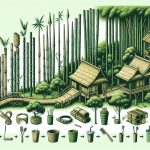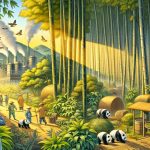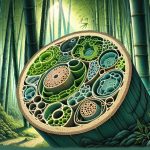Looking for eco-friendly alternatives to traditional fabric materials? You’re in luck! There are plenty of sustainable options that can help reduce your environmental footprint. From organic cotton to bamboo, these substitutes offer a greener way to dress.
Whether you’re passionate about protecting the planet or simply looking to make more conscious choices, these eco-friendly fabrics will keep you stylish and environmentally conscious. Say goodbye to harmful chemicals and hello to a more sustainable wardrobe.
Table of Contents
Organic Cotton
When choosing fabric materials, consider opting for organic cotton, a sustainable and environmentally-friendly alternative. Organic cotton offers numerous benefits compared to conventional cotton.
Firstly, organic cotton is grown without the use of synthetic fertilizers or pesticides, making it better for the environment and reducing the risk of harmful chemicals seeping into the soil and water sources. Additionally, organic cotton farming practices promote biodiversity and soil fertility, contributing to the overall health of ecosystems.
Furthermore, organic cotton is better for the health of farmers and consumers. Conventional cotton farming involves the use of toxic chemicals that can be harmful to farmers’ health. By choosing organic cotton, you support a healthier working environment for farmers and reduce their exposure to potentially dangerous substances.
In terms of quality, organic cotton often has a softer and more luxurious feel compared to conventional cotton. This is because organic cotton fibers aren’t treated with harsh chemicals during the production process. Organic cotton is also less likely to cause skin irritation or allergies, making it a great choice for those with sensitive skin.
Hemp
Consider hemp as an eco-friendly alternative to traditional fabric materials. Hemp farming techniques have evolved to be more sustainable and environmentally friendly. Unlike other crops, hemp requires minimal pesticides and herbicides to grow. It also requires less water compared to cotton, making it a more water-efficient option. Additionally, hemp plants naturally suppress weed growth, reducing the need for chemical weed control.
Hemp fabric durability is another advantage. It’s known for its strength and longevity, making it a reliable choice for various applications. Hemp fibers are resistant to mold, mildew, and UV rays, ensuring the fabric’s longevity even in harsh conditions. This durability makes hemp fabric suitable for clothing, upholstery, and other textile products that require long-lasting performance.
Furthermore, hemp is a versatile plant that can be used for more than just fabric. It can be used in construction materials, biofuels, paper, and even food products. This multi-purpose nature of hemp makes it a valuable resource in promoting sustainability and reducing waste.
Recycled Polyester
To continue exploring eco-friendly alternatives to traditional fabric materials, a great option to consider is recycled polyester. Recycled polyester is created by breaking down used plastic bottles and transforming them into new fabric. Here are three key points to understand about recycled polyester:
-
Upcycled plastic bottles: Instead of ending up in landfills or oceans, plastic bottles are given a second life through the recycling process. The bottles are collected, cleaned, and processed to create polyester fibers. This not only reduces waste but also helps to conserve valuable resources.
-
Circular economy: Recycled polyester is an excellent example of the circular economy in action. By using discarded materials as raw materials for new products, we can reduce the need for virgin resources and minimize our environmental impact. It promotes a more sustainable and responsible approach to production.
-
Environmental benefits: Compared to traditional polyester, recycled polyester has several environmental benefits. It requires less energy and water to produce, reduces greenhouse gas emissions, and helps to conserve non-renewable resources. Choosing products made from recycled polyester can contribute to a more sustainable and eco-friendly lifestyle.
Incorporating recycled polyester into our fabric choices is a simple yet impactful way to support the transition towards a more sustainable fashion industry. By opting for products made from upcycled plastic bottles, we can help create a greener future.
Bamboo
Bamboo is a sustainable fabric alternative that offers numerous benefits. It’s a highly renewable resource that grows quickly and requires minimal water and pesticides.
Additionally, bamboo fabric is naturally antibacterial, moisture-wicking, and breathable, making it an excellent choice for eco-conscious consumers.
Sustainable Fabric Alternative
If you’re looking for an eco-friendly fabric alternative, you may already be familiar with bamboo as a sustainable option. Bamboo fabric is gaining popularity due to its numerous benefits. Here are three reasons why bamboo is a great sustainable fabric alternative:
-
Jute bags: Bamboo fabric can be used to make jute bags, which aren’t only stylish but also biodegradable and eco-friendly. These bags are a perfect choice for those who want to reduce their carbon footprint.
-
Cork fabric: Another sustainable alternative is bamboo cork fabric. This fabric is made from bamboo fibers and cork, which are both renewable and sustainable materials. It isn’t only soft and lightweight but also water-resistant and hypoallergenic.
-
Breathable and moisture-wicking: Bamboo fabric is known for its breathability and moisture-wicking properties. It helps to keep you cool and dry, making it perfect for activewear and summer clothing.
Benefits of Bamboo
One major benefit of bamboo as a fabric alternative is its versatility. Bamboo can be used to create a wide range of products, from clothing and bedding to towels and even furniture. Its natural properties make it a highly durable and resilient material, suitable for various applications.
Bamboo fabric is soft, breathable, and hypoallergenic, making it ideal for those with sensitive skin. Additionally, bamboo has a positive impact on the environment. It’s a fast-growing plant that requires minimal water and no pesticides, making it a sustainable choice. Bamboo also helps to reduce carbon dioxide levels in the atmosphere and produces more oxygen compared to other plants.
Choosing bamboo as a fabric alternative isn’t only beneficial for you but also for the planet.
Tencel
To make your wardrobe more sustainable, consider using Tencel as an eco-friendly substitute for traditional fabric materials. Tencel is a type of fabric made from the cellulose found in wood pulp, usually sourced from sustainable eucalyptus trees. The production process of Tencel involves using a closed-loop system, where almost all of the chemicals used are recycled and reused, making it a much more environmentally friendly option compared to traditional fabrics.
Here are three reasons why you should choose Tencel over traditional fabrics:
-
Soft and breathable: Tencel has a smooth and soft texture, making it comfortable to wear. It has excellent moisture-wicking properties, allowing your skin to breathe and stay cool even in hot weather.
-
Sustainable production: The production of Tencel requires less water and energy compared to traditional fabrics like cotton. Additionally, the closed-loop system used in its production ensures minimal waste and pollution.
-
Biodegradable: Tencel is biodegradable, meaning it can naturally break down without causing harm to the environment. This makes it a more sustainable choice, especially when considering the impact of clothing on landfills.
Linen
Consider linen as a sustainable alternative to traditional fabric materials.
Linen is a natural fiber made from the flax plant. It has been used for centuries due to its numerous benefits and properties.
One of the main benefits of linen is its eco-friendliness. It’s biodegradable and requires less water and energy to produce compared to other fabrics.
Linen is also known for its durability, making it a long-lasting choice. It has a high tensile strength, meaning it can withstand repeated use without losing its quality.
Additionally, linen has excellent breathability and moisture-wicking properties, keeping you cool and dry in hot weather. It’s also hypoallergenic, making it suitable for people with sensitive skin.
Another advantage of linen is its versatility. It can be used in various applications, from clothing and bedding to home furnishings. Linen’s natural luster and texture give it a unique and elegant appearance.
Piñatex
If you frequently prioritize sustainability in your fabric choices, you’ll be pleased to know about Piñatex. This innovative material is made from pineapple leaves, offering a eco-friendly alternative to traditional fabrics.
Here are three key points to help you understand Piñatex:
-
Piñatex manufacturing process: The production of Piñatex involves extracting fibers from pineapple leaves, which are a byproduct of the fruit industry. These leaves are then processed to create a non-woven textile, which is durable and versatile. This process not only repurposes waste materials but also reduces environmental impact compared to conventional fabric production.
-
Piñatex applications in the fashion industry: Piñatex has gained popularity in the fashion world as a sustainable substitute for leather. It can be used to create various products like bags, shoes, and accessories. The material has a unique texture and appearance, resembling leather, making it a desirable choice for eco-conscious fashion brands and consumers.
-
Benefits of Piñatex: Apart from its sustainability aspect, Piñatex offers several advantages. It’s lightweight, breathable, and water-resistant, making it suitable for a wide range of weather conditions. Additionally, it’s cruelty-free and doesn’t involve the use of animal products, making it a viable alternative for those who prefer vegan options.
Frequently Asked Questions
Are These Eco-Friendly Fabric Materials More Expensive Than Traditional Fabric Materials?
Cost comparison and availability are key factors to consider when comparing eco-friendly fabric materials to traditional ones. It’s important to weigh the benefits of sustainability against any potential increase in price.
Are There Any Specific Care Instructions for These Eco-Friendly Fabric Materials?
To properly maintain and extend the lifespan of eco-friendly fabrics, follow these care instructions. Check the washing and care tips specific to the fabric type. This will ensure they stay in good condition and last longer.
Can These Eco-Friendly Fabric Materials Be Used for All Types of Clothing?
Yes, eco-friendly fabric materials can be used for all types of clothing. They offer a more sustainable alternative to traditional fabrics, reducing the environmental impact of clothing production while still providing the same benefits.
Are There Any Limitations or Drawbacks to Using These Eco-Friendly Fabric Materials?
There are limitations to using eco-friendly fabric materials, such as availability and cost. However, the environmental impact of traditional fabric materials, like pollution and resource depletion, makes these alternatives worth considering.
How Do These Eco-Friendly Fabric Materials Compare in Terms of Durability and Longevity?
When it comes to durability and longevity, eco-friendly fabric materials can be a great choice. They provide both sustainability and longevity, while also minimizing their environmental impact.
- Tetron Fabric for Marine Applications: Durability and Use Cases - June 18, 2025
- Tetron Fabric for Outdoor Furniture: Weather Resistance and Care - June 18, 2025
- Tetron Fabric for Wall Coverings: Style and Application Tips - June 18, 2025




